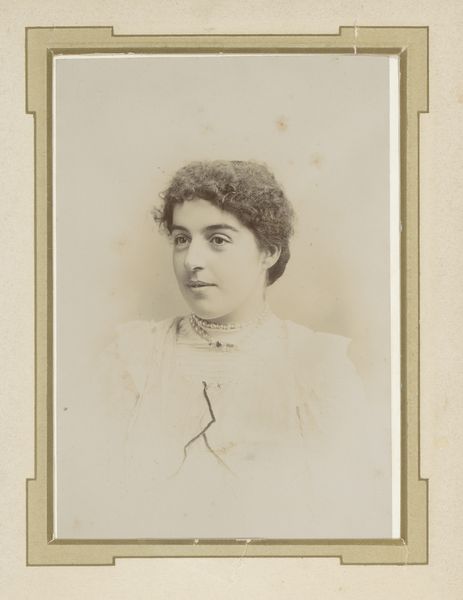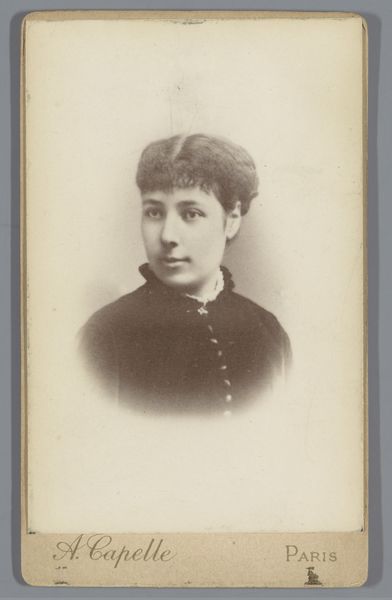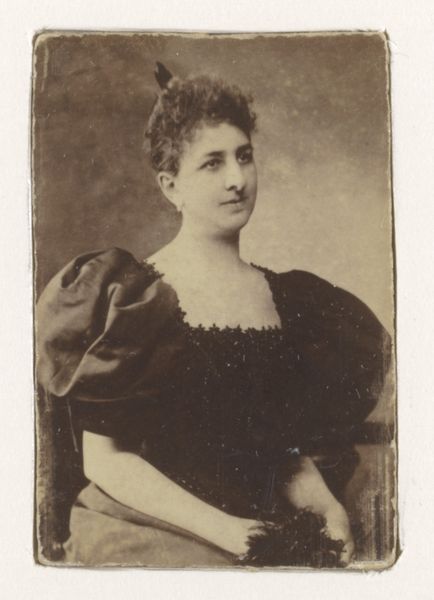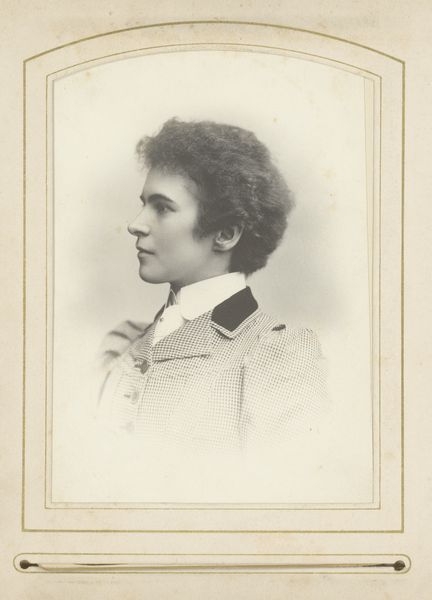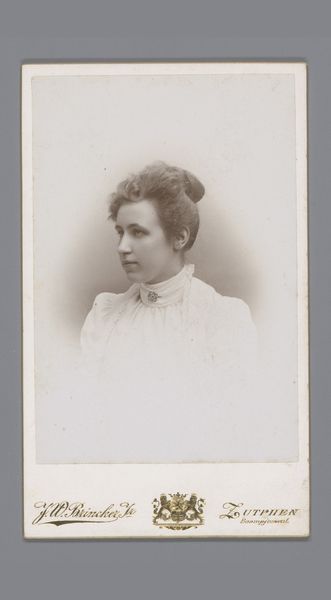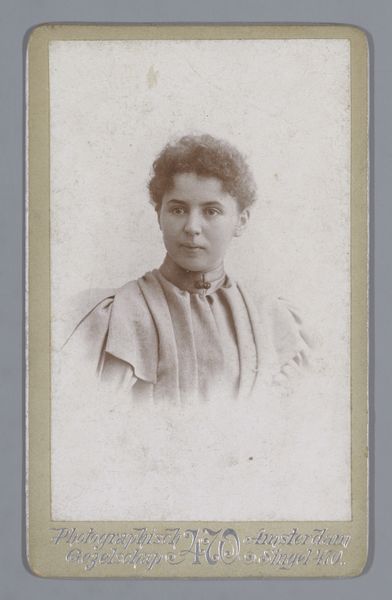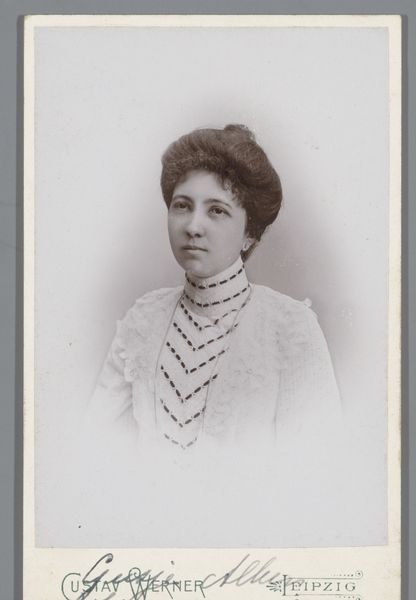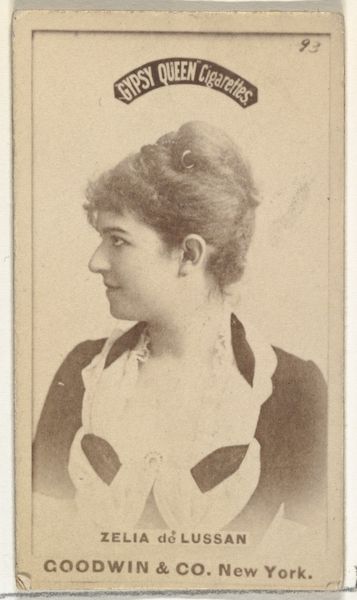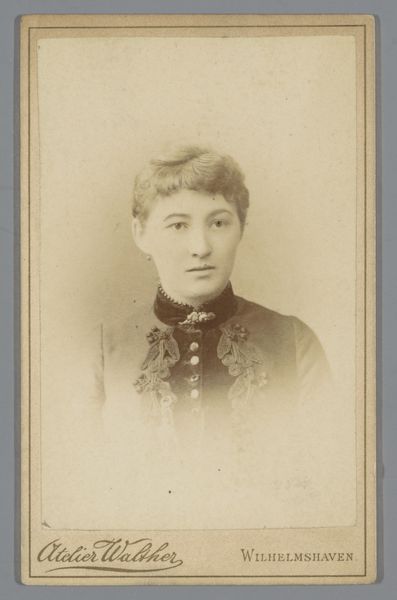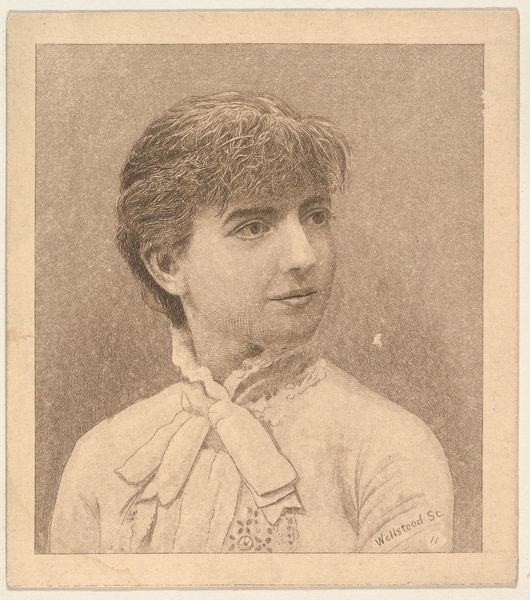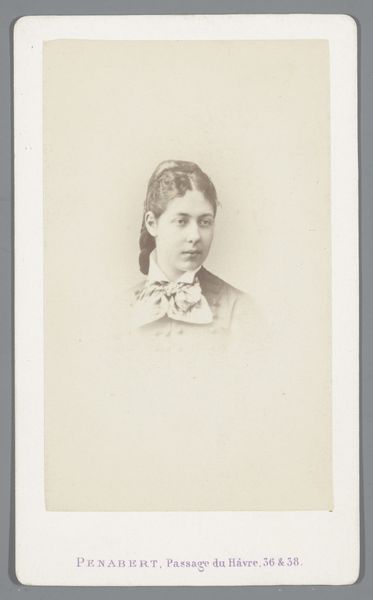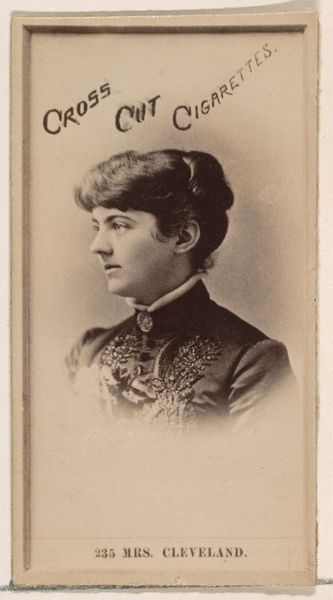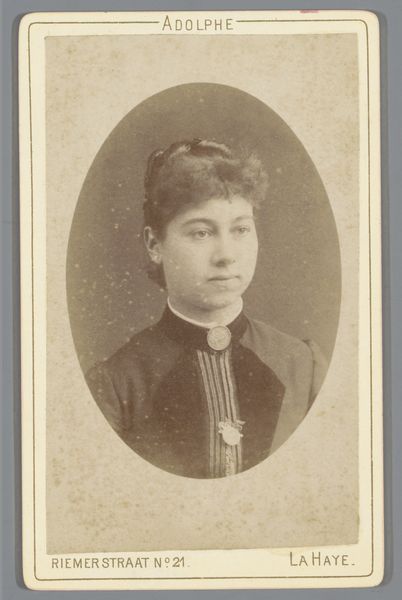
photography
#
portrait
#
16_19th-century
#
archive photography
#
photography
#
historical photography
#
historical fashion
#
19th century
Dimensions: height 165 mm, width 106 mm
Copyright: Rijks Museum: Open Domain
Curator: Here we have a photographic portrait dating from around 1880 to 1885, titled “Portret van een vrouw, vermoedelijk M. Marmelstein-Thornburn” by A. Kaulfuss. It’s a subtle, rather subdued image, isn’t it? Editor: Yes, my first impression is one of poised introspection. The composition—the woman’s profile, sharply defined against that soft background—it creates a sense of both delicacy and resolve. Curator: Portraits such as this were popular during that era, acting as social and personal documents. They were carefully crafted, using specific poses, dress, and lighting to project particular ideas about the subject’s identity and status. What do you see in that light? Editor: I find the tonality masterful, achieving remarkable balance despite the photographic medium’s limited range at the time. There’s a subtle modulation, a kind of chiaroscuro effect that sculpts the face and gives her a luminous quality. The details in her dress seem equally impressive. Curator: It’s interesting how those formal aspects reinforce the cultural narrative, almost like codes to unlock an era’s understanding of femininity, beauty, and social decorum. The elaborate hair, the neckline of her gown – each piece says something about where she belonged. The symbolic language of photography was often understated, and sometimes subversive. Editor: I agree; it’s a negotiation of power and image, really. Even her gaze—averted, but steady—speaks to a complex interplay of submission and assertion. One has to wonder: how was that gaze constructed, negotiated and framed in a time of developing photographic practice? Curator: Considering Kaulfuss’s presence in Penang indicated by the stamp, what assumptions can we safely make about the relationship of colonization and trade, and the dissemination of Western culture and the subject's position within those dynamics? These symbols take on new layers of complexity outside their original cultural bounds, you see. Editor: Fascinating, truly. Looking again, I see that the sharpness of the profile is really all that allows me to place the figure into 3 dimensions within the photograph. I appreciate those calculated, subtle touches that make it much more than just an everyday portrait. Curator: Exactly. In its careful balance between form and cultural coding, it provides a lens – forgive the pun – onto the Victorian era and its values. The photograph captures an echo that allows a discourse with today's aesthetics and social memory. Editor: Absolutely. It really makes you think about how we all try to create an image.
Comments
No comments
Be the first to comment and join the conversation on the ultimate creative platform.
